Since I enjoyed coming to my sit spot in the early evening last time, I did the same this time. The location of my sit spot is in towards the front of Beale Garden, in the center of a
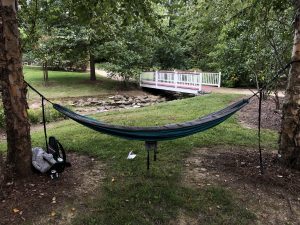
My sit spot
triad of Paperbark trees; a stone’s throw away from the end of the steps that take you down to the garden. They are the perfect distance apart to set up my hammock and relax underneath because of their far-reaching canopies. I sit facing south, towards the creek and the bridge, with my back to the Cocke Building.
As soon as I started to tune into my surroundings again, the first thing I heard was the cicadas chirping from the North-East. Next, I heard birds calling as they were flying overhead. I got a bit excited since my last time in my sit spot I only saw insects and not any other types of animals.
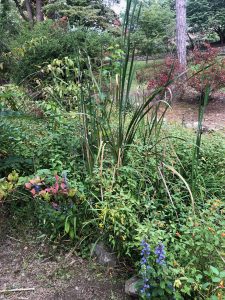
Tall grass that I am following this semester
I started looking for the things I was going to follow this semester and noticed that the creek’s water level was significantly lower than last time, or at least it appeared to be. There was a lot of still standing water since thelevels weren’t high enough to keep a current going. The tall blades of grass at the foot of the creek bed appeared to be taller! However, it looked like it was nearing its wilting point as some of the blades were falling over to the side. I also noticed that a few of them had turned brown. Last time, a few of them were brown in some places but mostly green. Now, they appear to be mostly brown and green in some places; if at all. As for the tree across the creek from me, some bunches of leaves at the end of the branches have started to change colors. However, it is not super noticeable yet and I don’t think I would have noticed if I had not taken the time to do so.
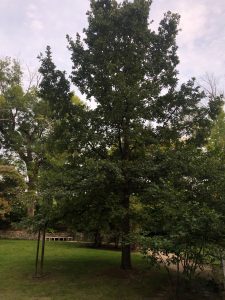
Tree that I am following this semester
During my time walking around, I chose to look at the different congregations of plants and the different insects around them. There was a patch of wildflowers close by to the tall grass that a bunch of buzzing bees bumbling around. Something I saw as I watched the bees, that I definitely wouldn’t have seen if I was watching passively, was when a bee went in one of the flowers and then the flower snapped off of its stem and the bee fell to the ground with it! I also noticed how fast the bees move from flower to flower, it is almost instantaneous. I chose to take a closer look at the creek and noticed that no fish, or anything else, were swimming in it. I think this was mostly due to such low levels of water and lack of current.
I had walked around Beale garden before, but never with this much intent. I realized I had never gotten a chance to properly walk on the other side of the bridge, closer to turner hall, and noticed quite a bit more vegetation and even the creek’s water levels were higher. I think this might be due to the lack of foot traffic and human interaction, which is probably why I never had any inclination to go back there.
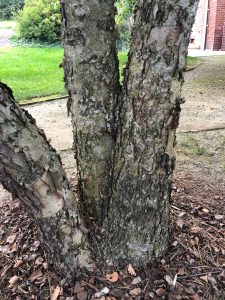
Lower bark on the Paperbark Tree
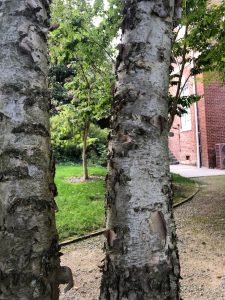
Upper bark on the Paperbark Tree
As for the adaptations, I had a bit of a tough time noticing any at first. I started to walk around the garden again thinking maybe I would have some ‘lightbulb’ moment. I started to look closer to the ground to see if there was anything noticeably different with bushes and shrubs that were closer to the ground. What I did notice, is that the triad of trees that I sit between all had a tougher, thicker layer of bark towards the base of the tree and thinner bark towards my eye level. I think this adaptation might be in response to animals on the ground peeling away at the bark closer to the ground.
Another adaptation I noticed was an area of one type of plant that had all congregated around one section of the creek. Specifically, this area of the creek had a higher water level, so the plants might’ve adapted in their surroundings so that they could be closer to a consistent source of water.
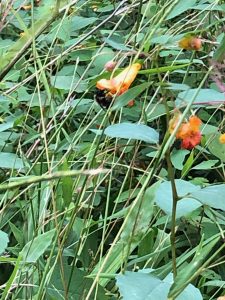
A bee inside one of the wildflowers
As for the third adaptation, this one came quite easily. I remembered that brightly colored flowers are meant to attract bees to help pollinate and reproduce. That in itself is an adaptation! I caught a picture of a bee inside one of the flowers but had to be super careful and quick to snap a photo before he moved on to his next flower. I think it was easier for me to notice adaptations when I was actively looking for them, rather than sitting and thinking about what they might look like.

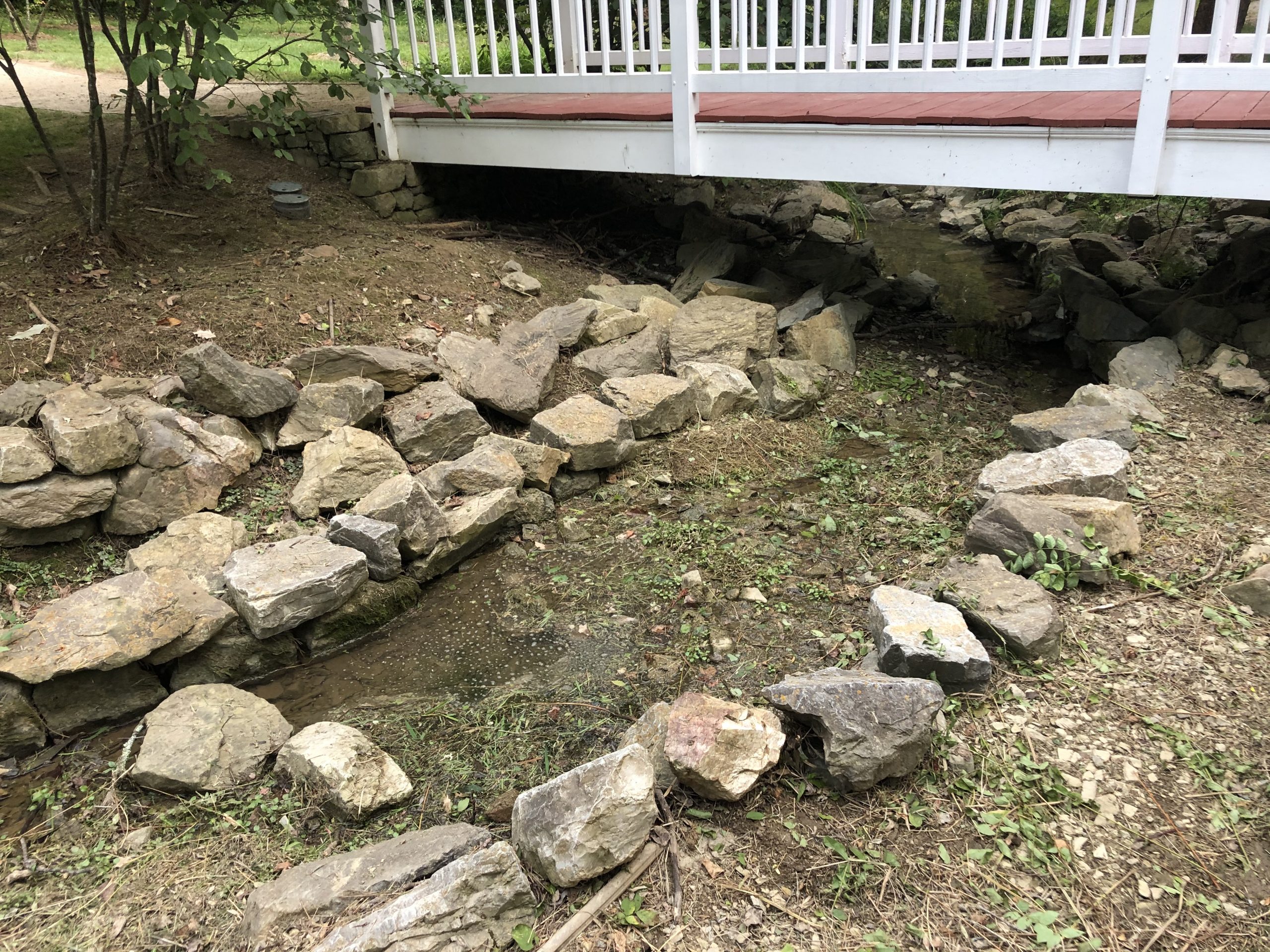
I really liked how you pointed out that the color of flowers is meant to attract pollinators. I think this is one of the easiest adaptations to see, but the most often overlooked since many people look at how beautiful they are and see the colors more as pretty than useful.